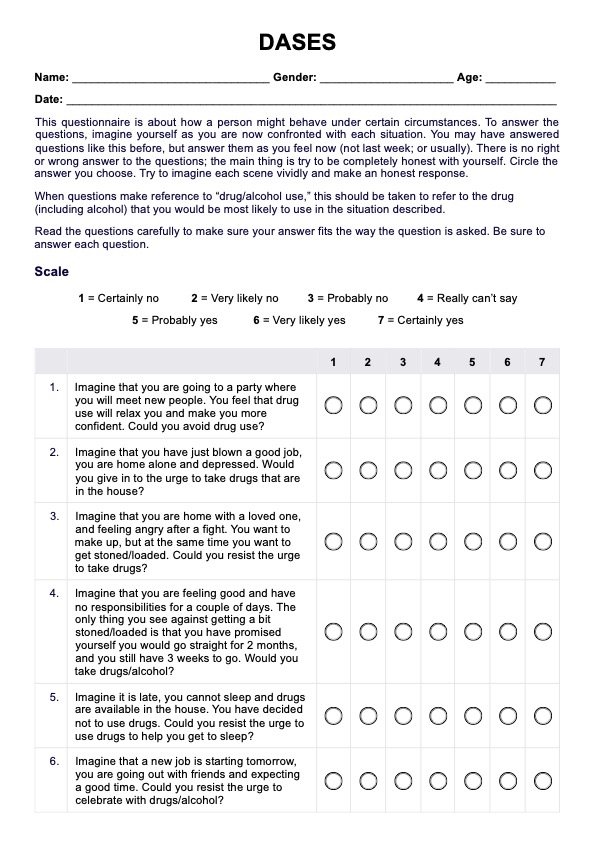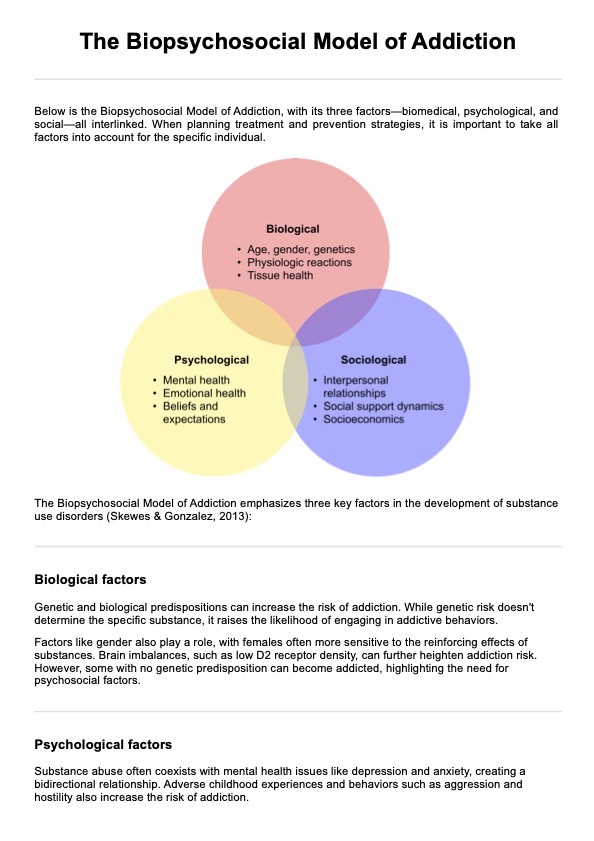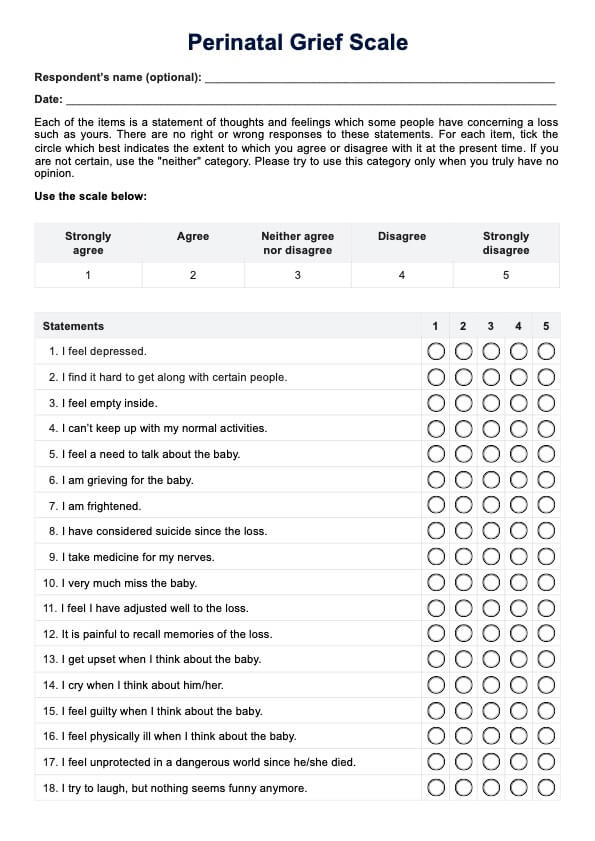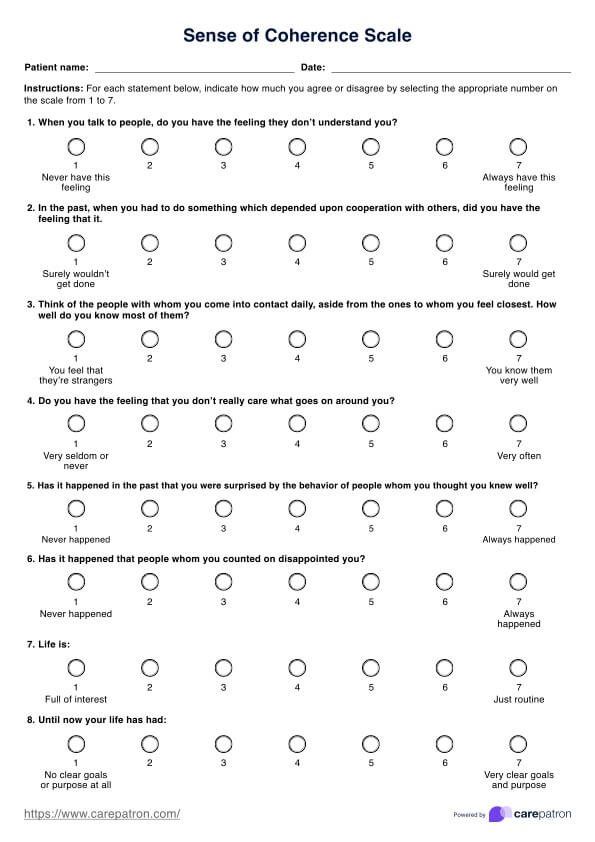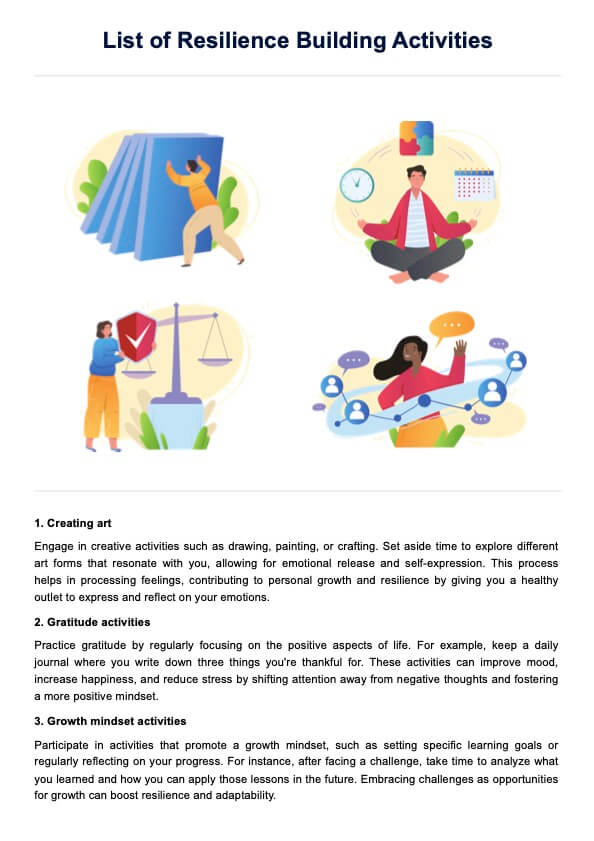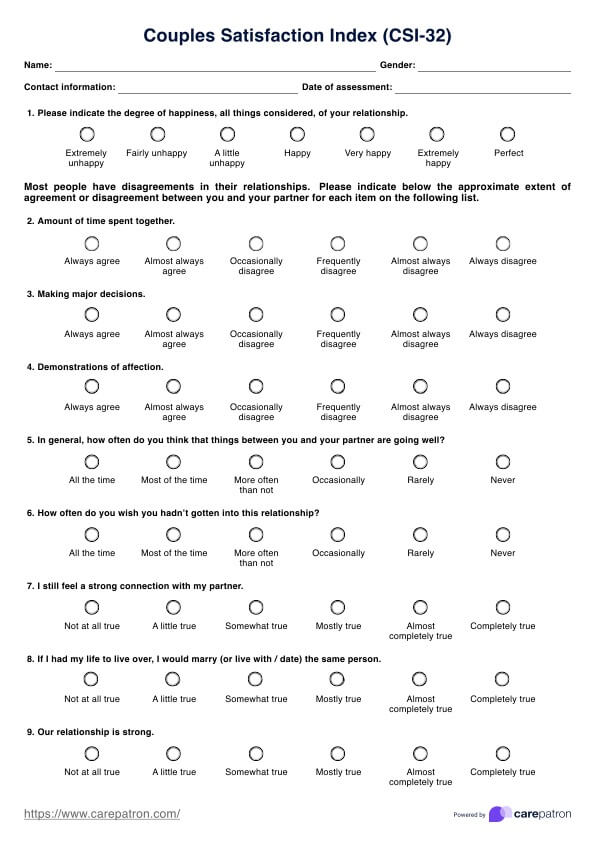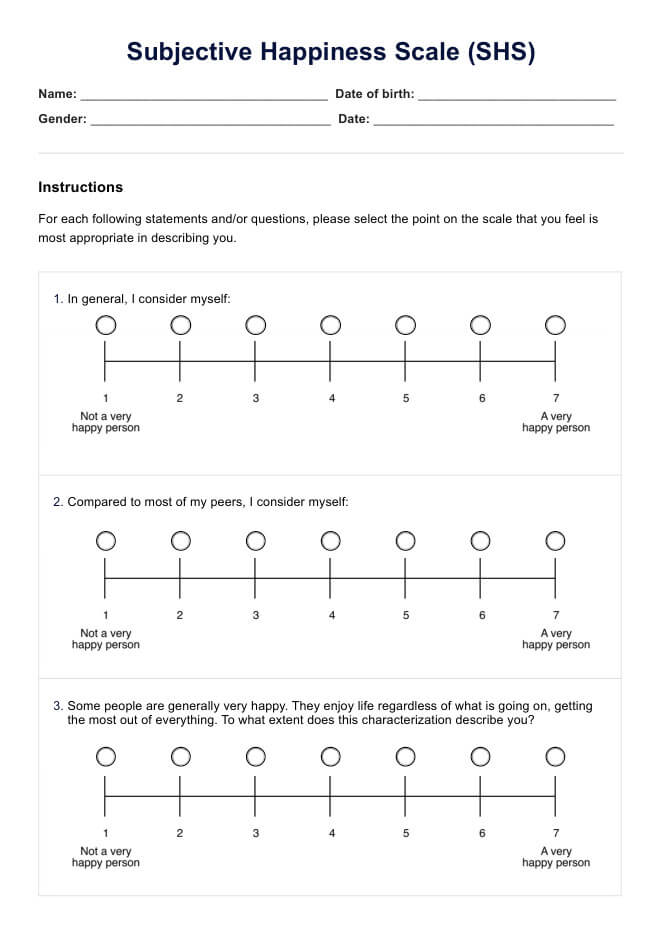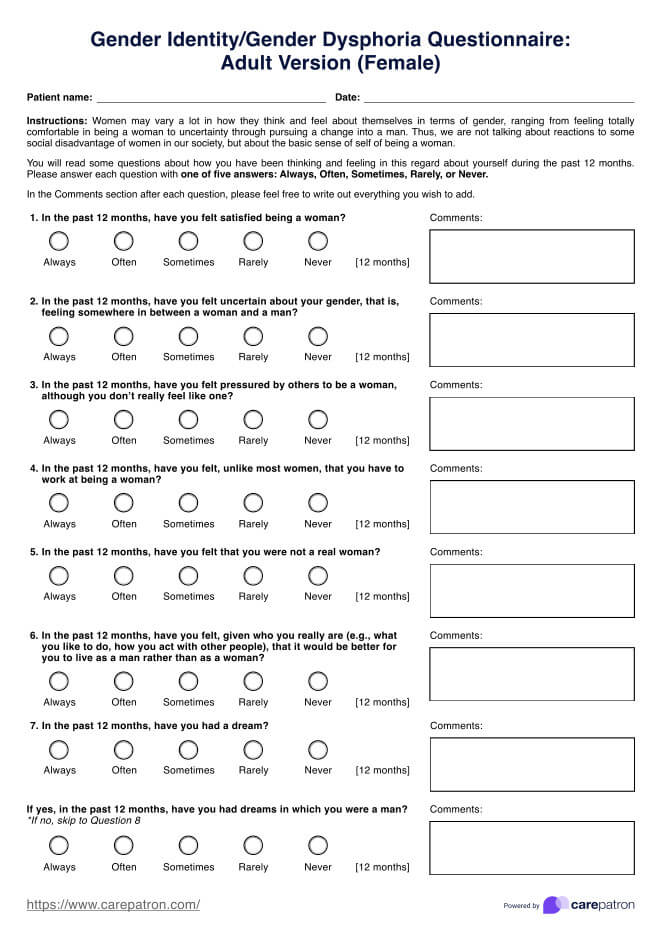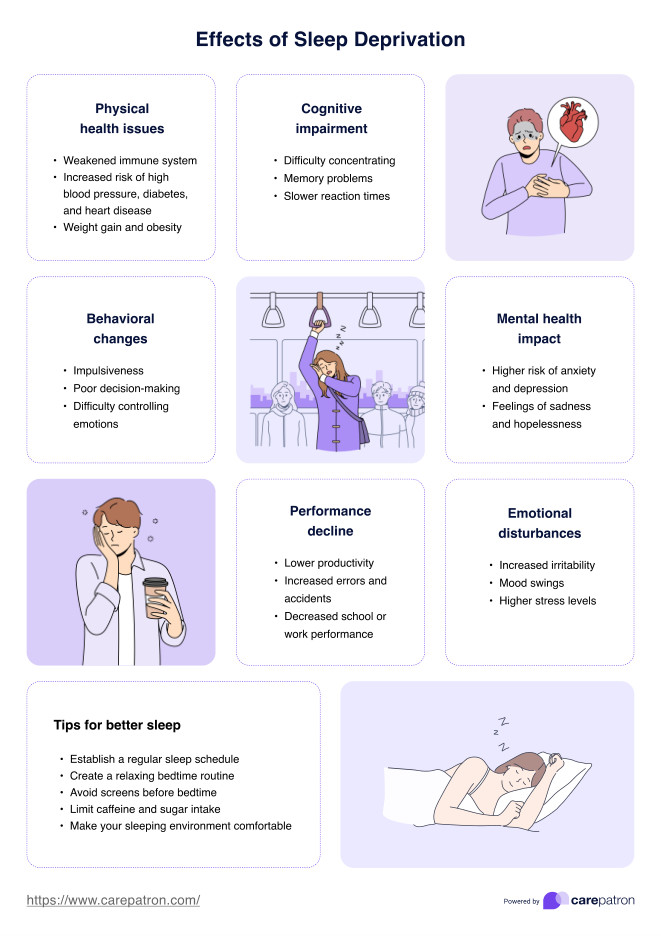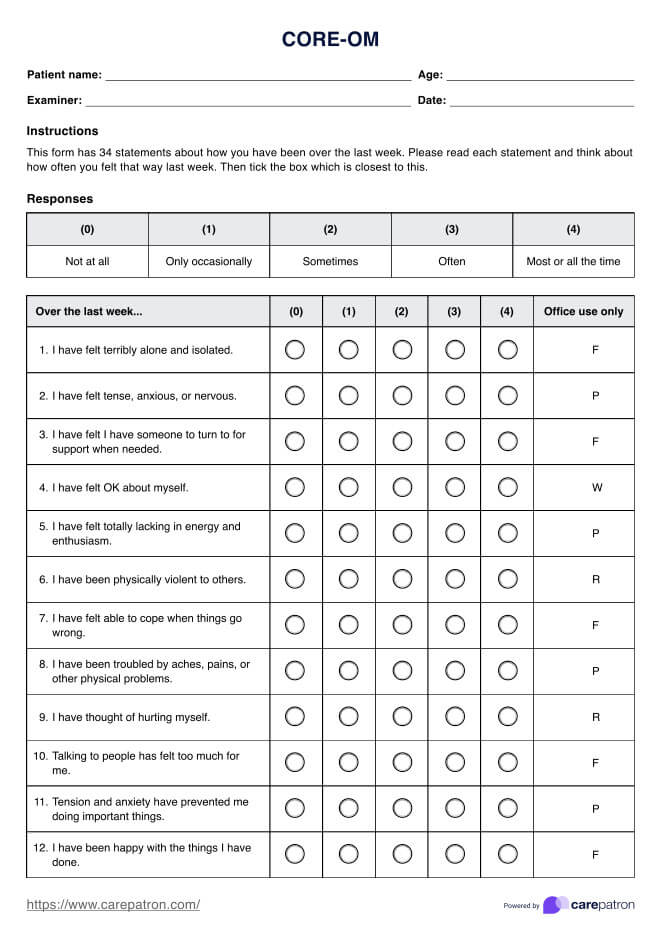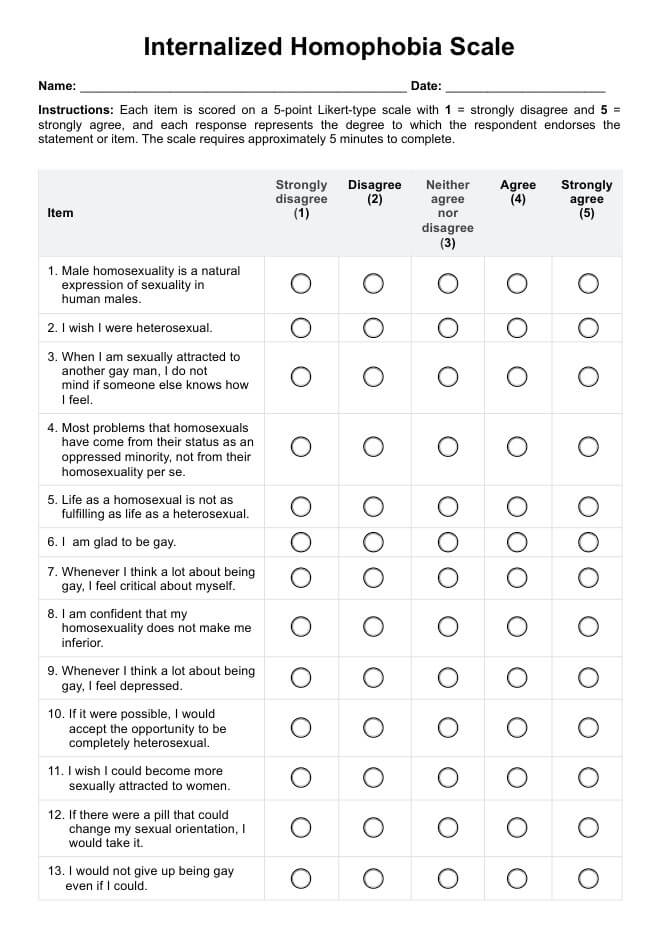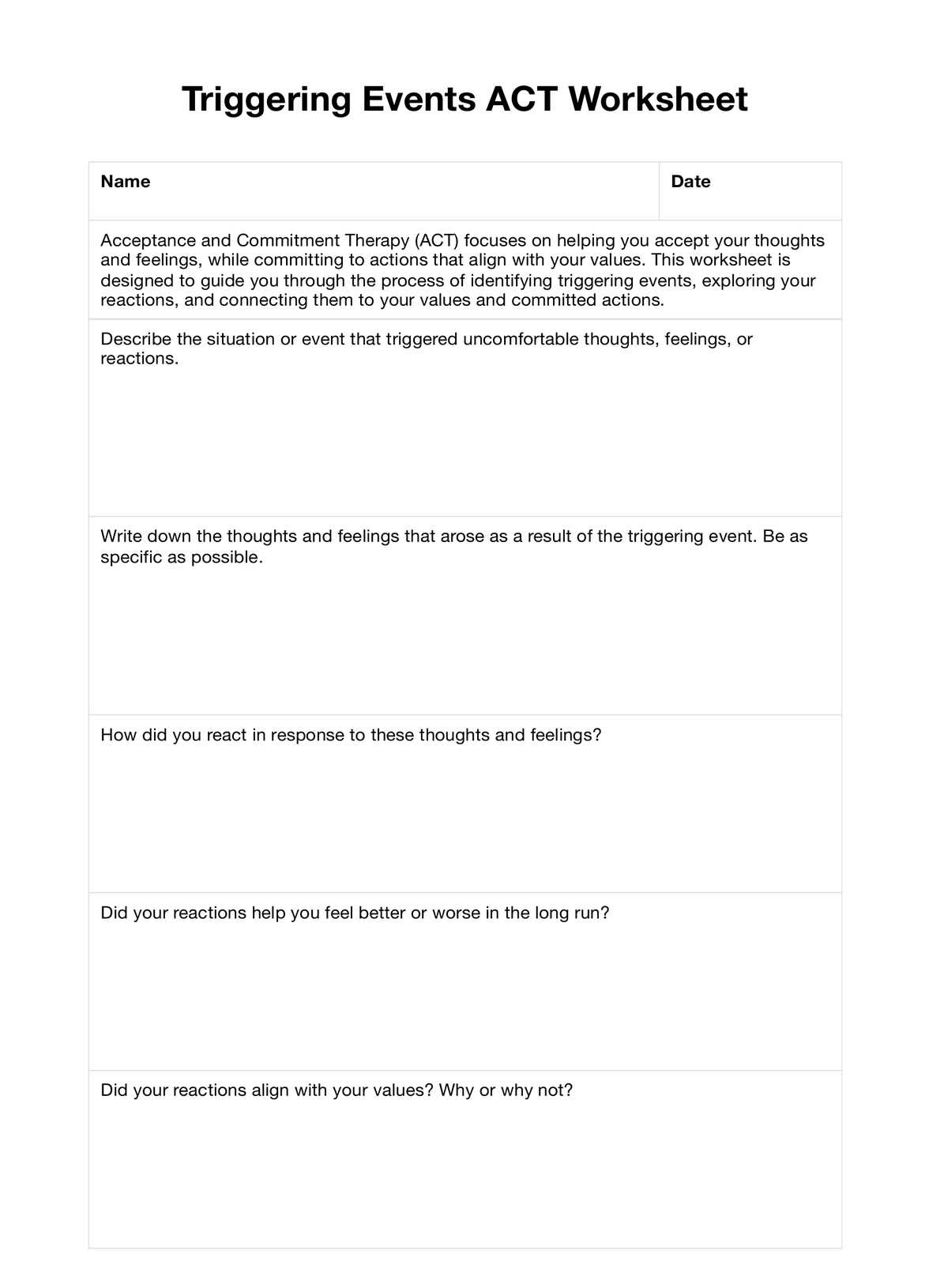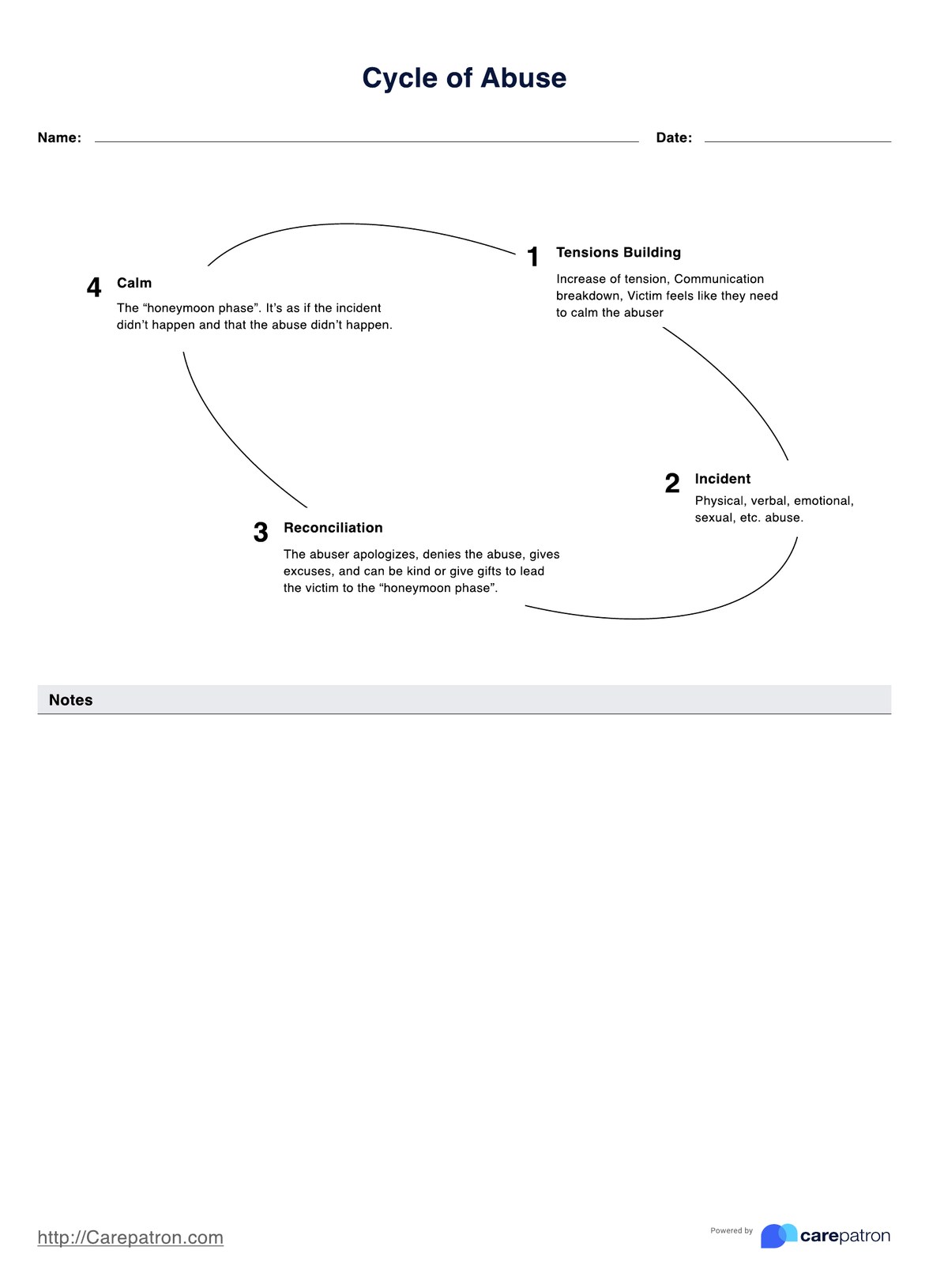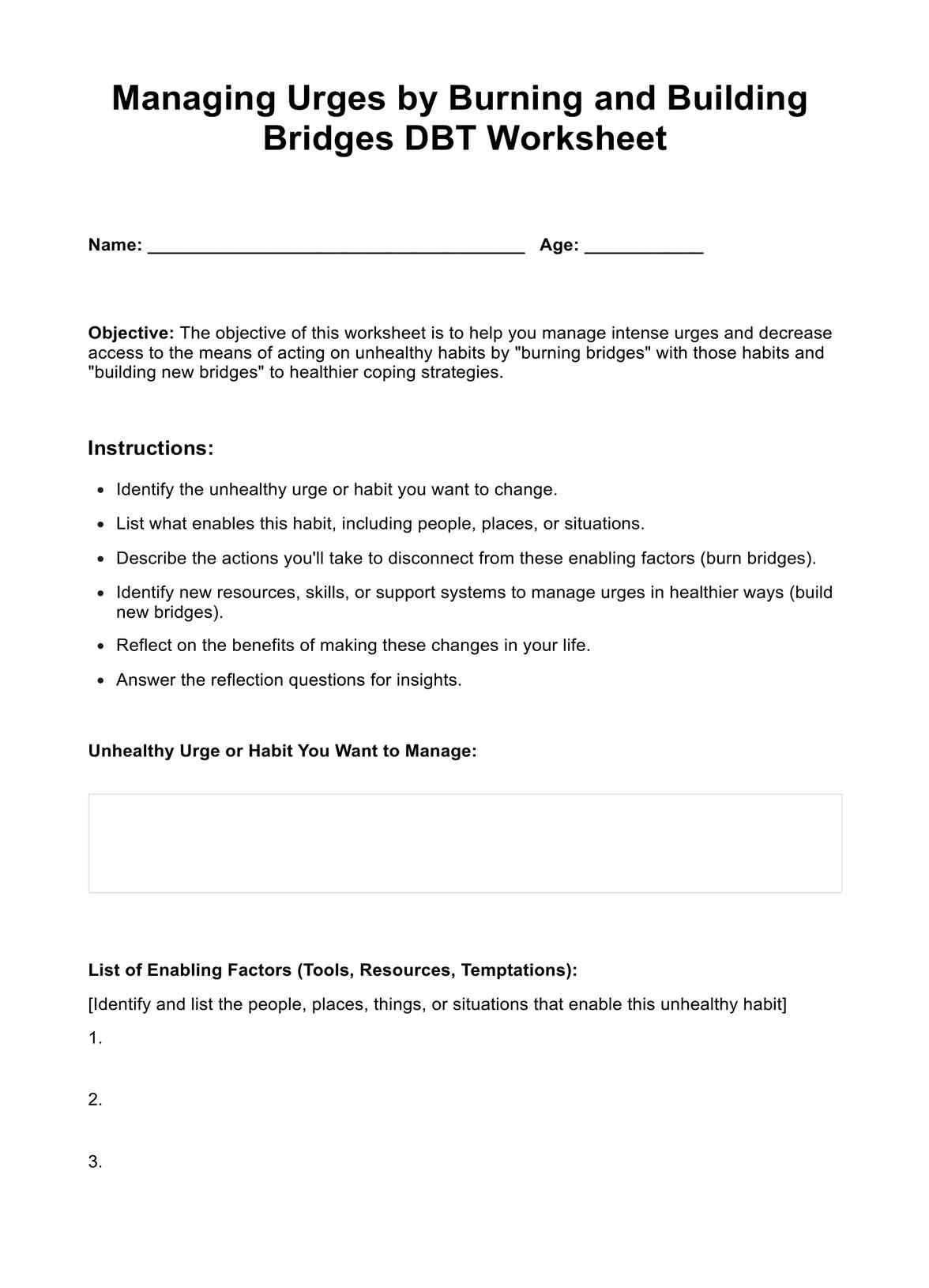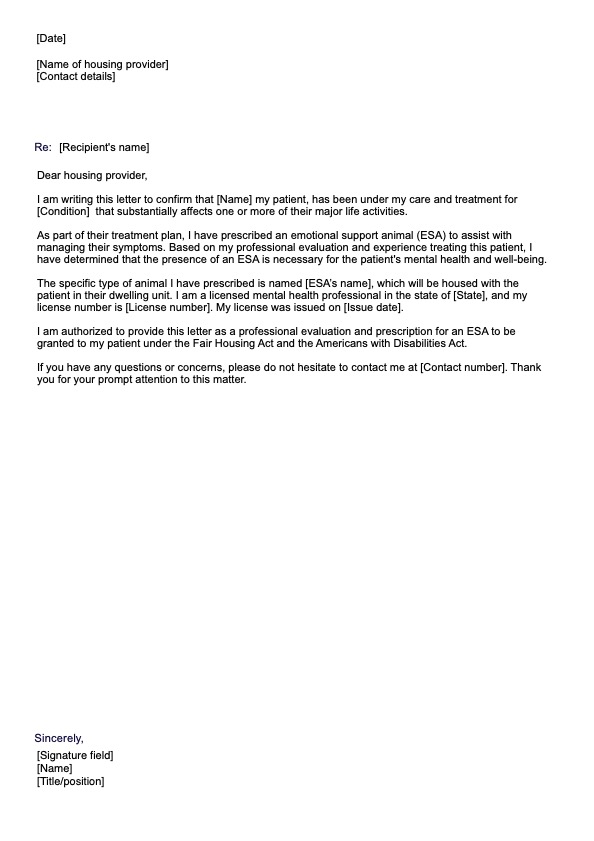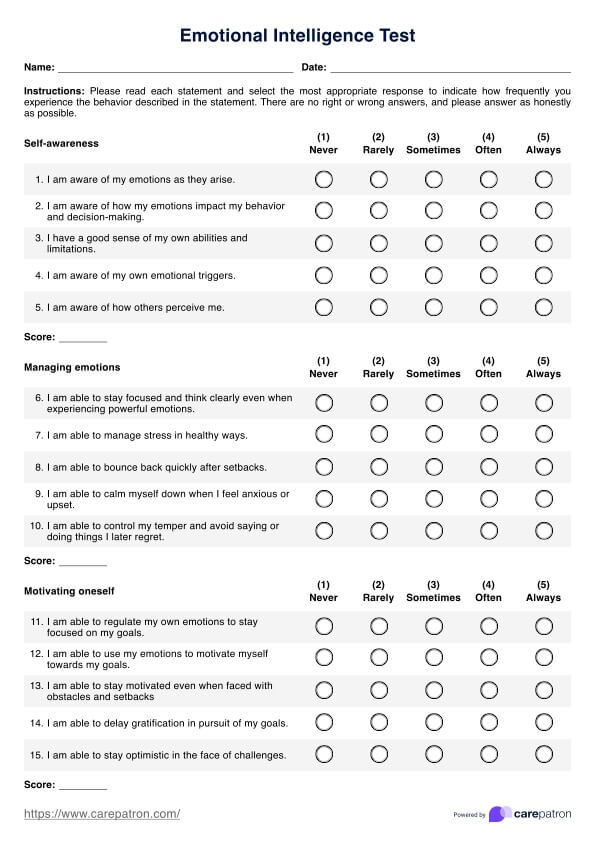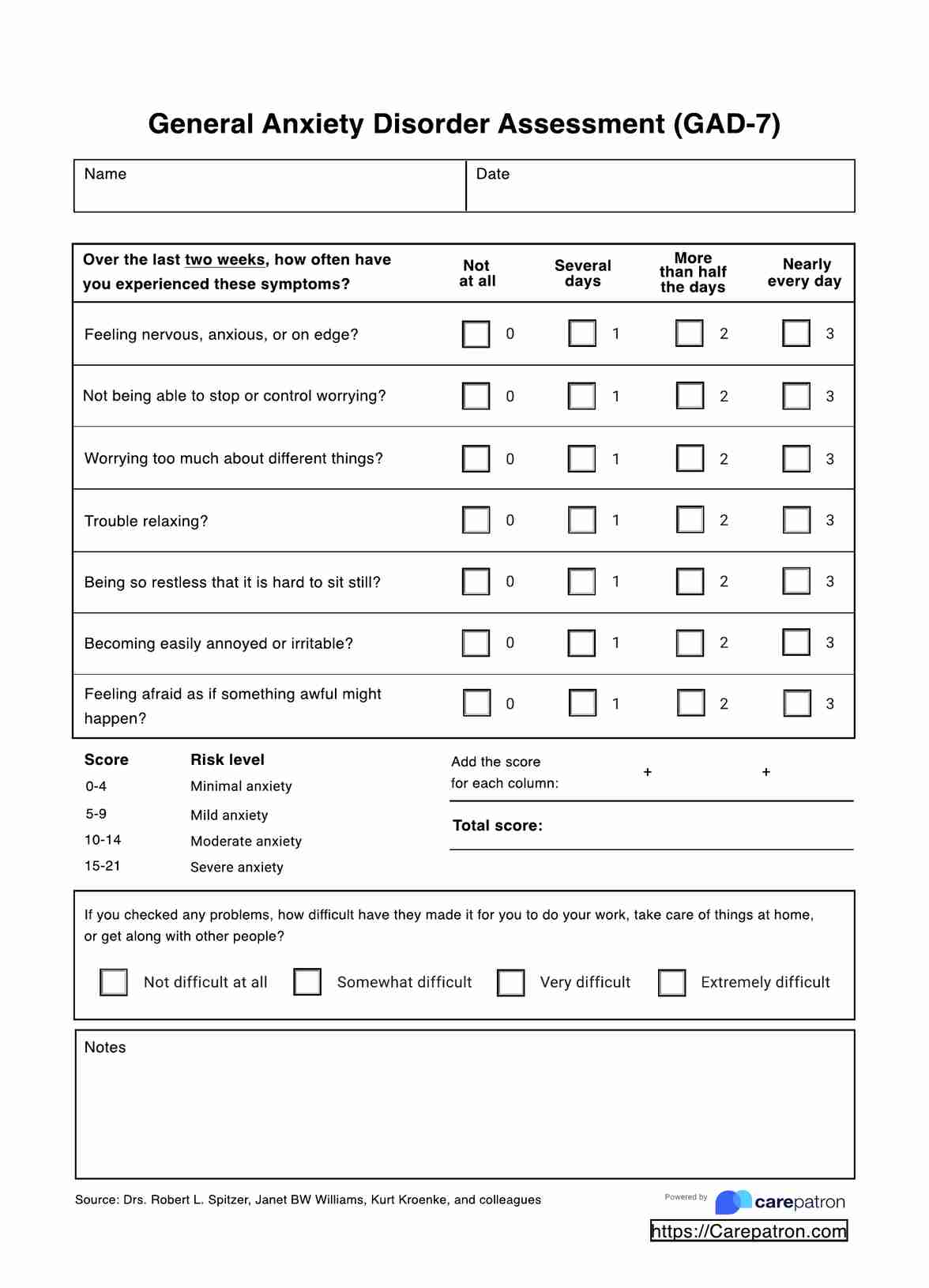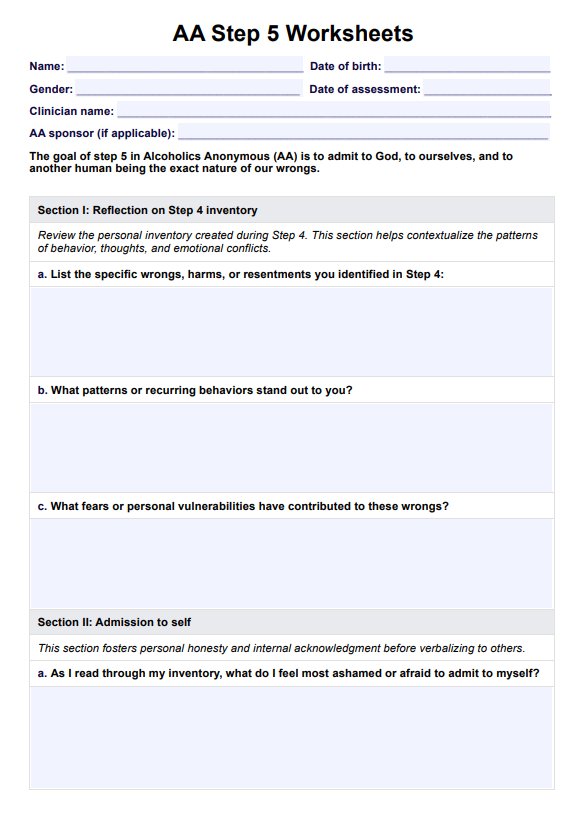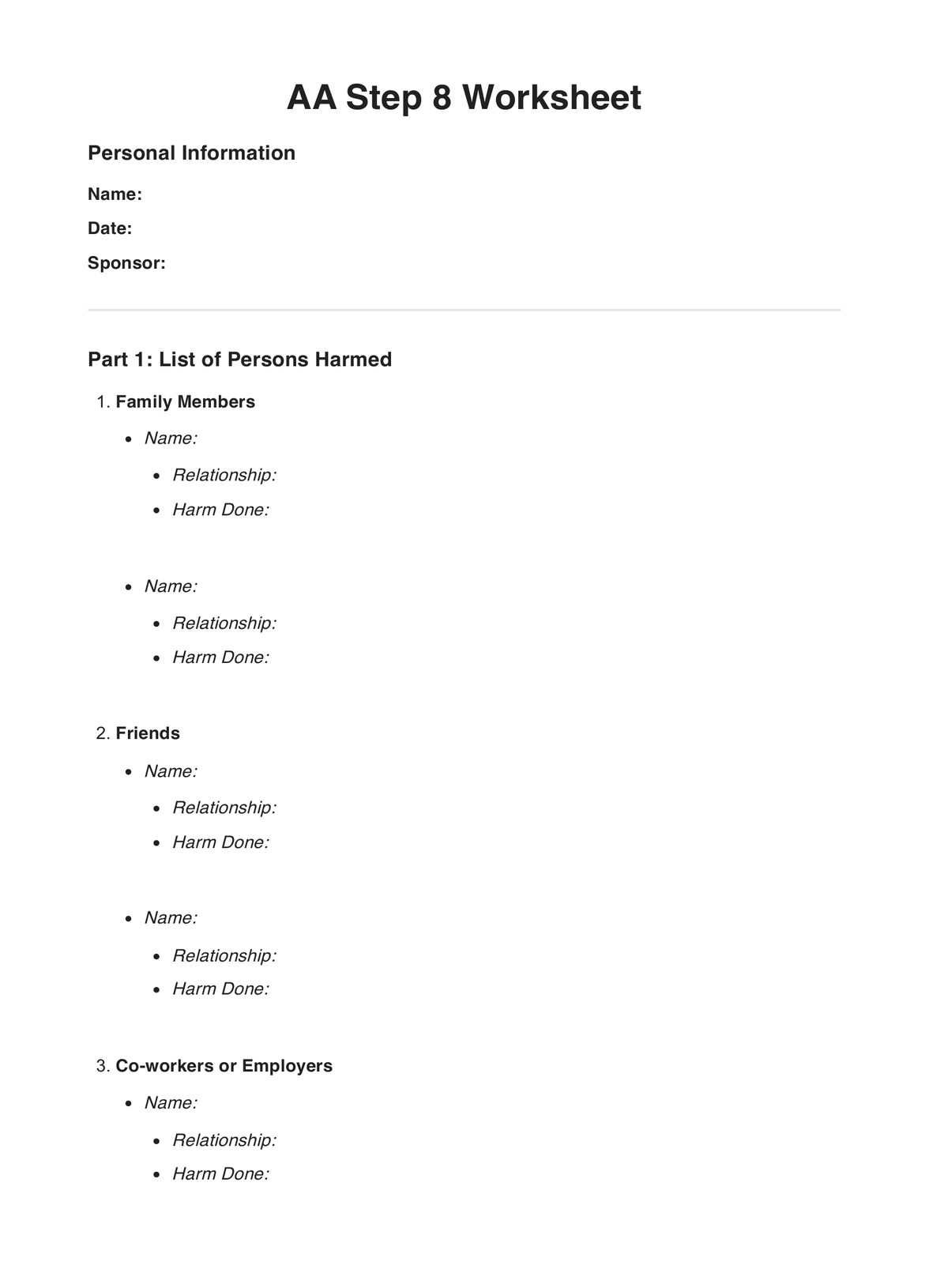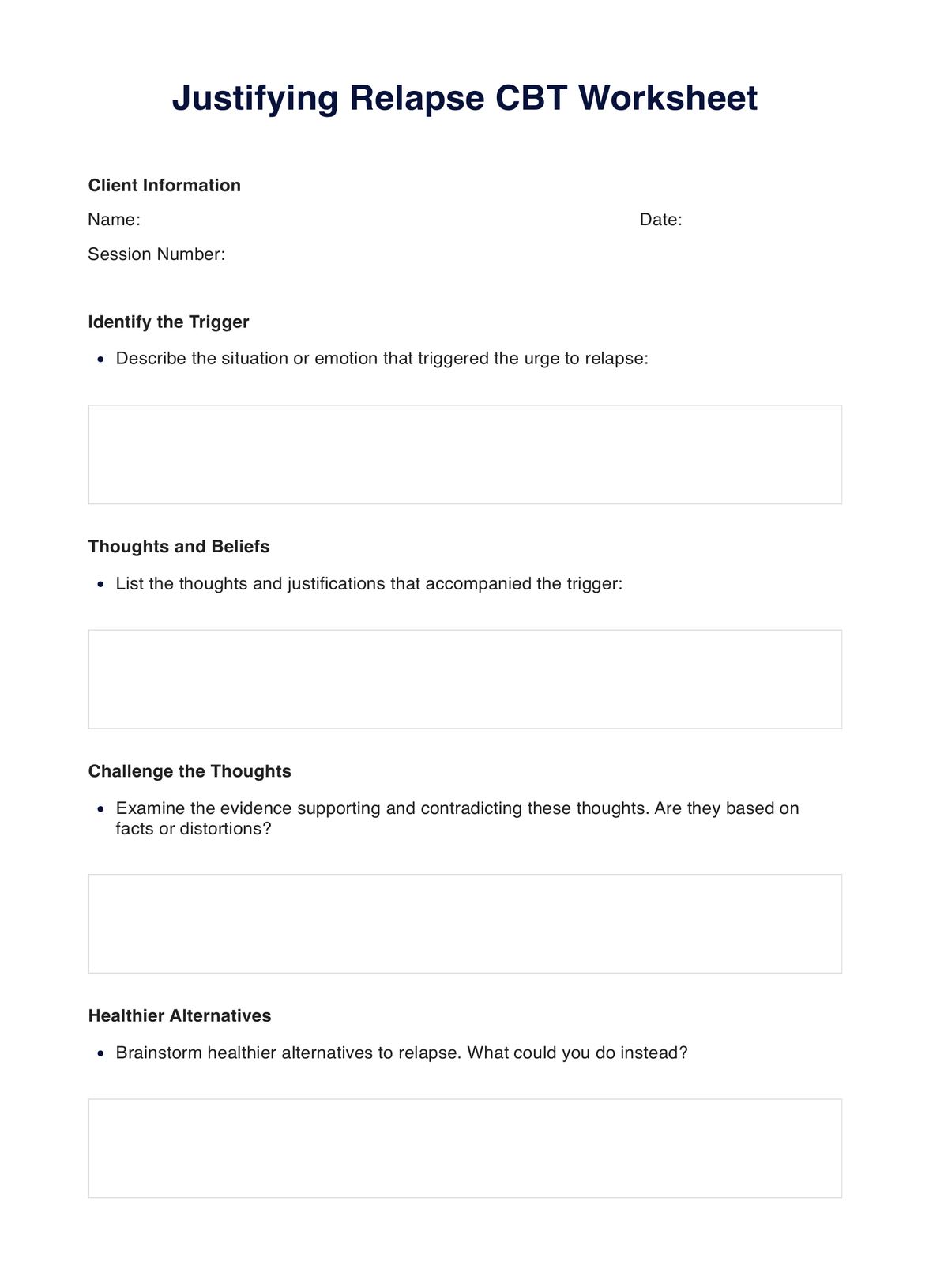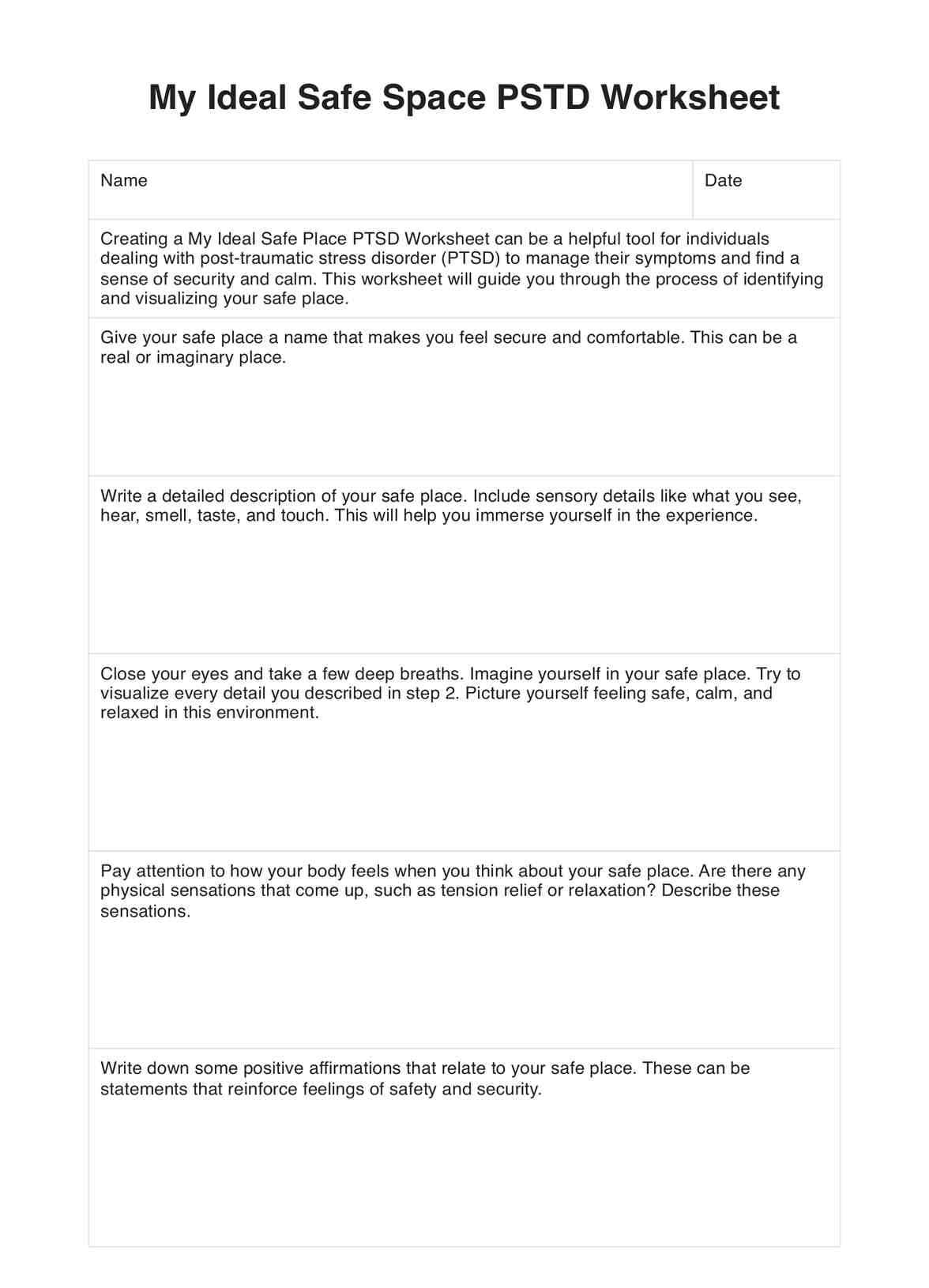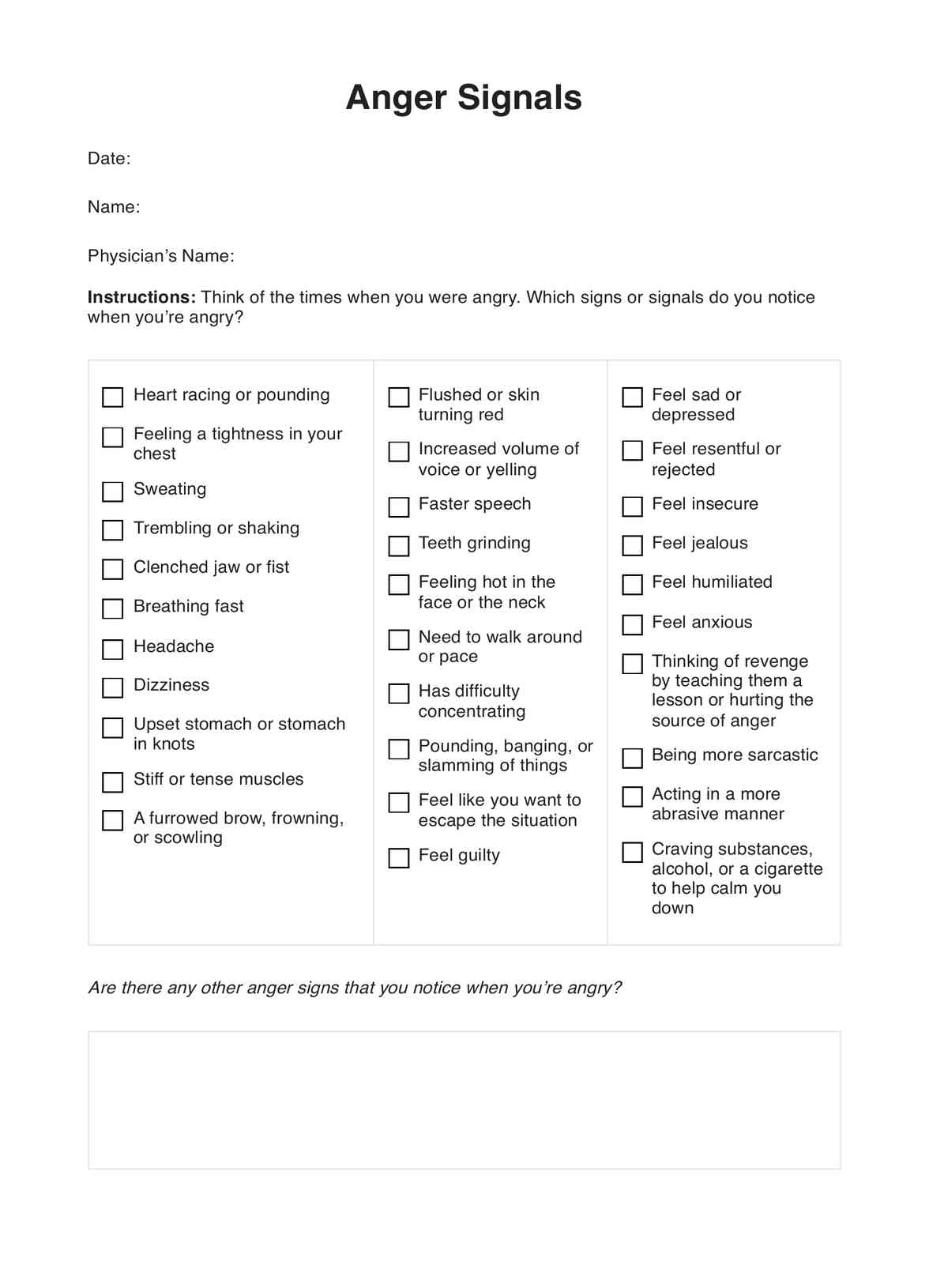AA Step 4 Worksheets
Get support with your recovery journey using the AA Step 4 Worksheet. Explore self-awareness and healing. Start your path to sobriety today.


What is an AA Step 4 Worksheet?
The AA Step 4 Worksheet is a powerful tool used within the context of Alcoholics Anonymous (AA), a well-known mutual support group that assists individuals struggling with alcohol addiction. Step 4 is considered a crucial stage in AA's 12-step recovery program, which involves conducting a searching and fearless moral inventory of oneself.
Out of the twelve steps, the fourth step plays an instrumental role in helping individuals in recovery identify the exact nature of their character defects, resentments, fears, past wrongdoings, or actions that produced negative feelings. This honest inventory can become the foundation for personal growth and transformation.
Similar to the 4th Step Worksheet, this is designed to provide a structured approach to facilitating the self-inventory process. Typically, it consists of questions and prompts to foster self-reflection and introspection. As healthcare practitioners, we can use this worksheet to encourage clients to take an honest and deep look at their past actions, relationships, and behaviors, enabling them to gain insights into the underlying causes of their alcoholism and the patterns that may have contributed to it.
AA Step 4 Worksheets Template
AA Step 4 Worksheets Example
How to use the AA Step 4 Worksheet
The AA Step 4 Worksheet is crucial for the fourth step of AA's 12-step recovery program. It helps take a moral inventory and provides a structured approach. Here's how to use it effectively:
Step 1: Download the worksheet
To get started, download the AA Step 4 Worksheet using the link on this page. You can also get it from the Carepatron app or our resources library. This is optimized for both digital use or through pen and paper.
Step 2: Dedicate time and space
Advise your client to find a calm and quiet space to focus without interruptions. Highlight the importance of creating a relaxed environment and taking time for this deep reflective work.
Step 3: Read the instructions carefully
Before starting, ensure clients read through the instructions on the worksheet. This will give them a better understanding of how to approach each section and what is expected from them. Remind them that there are no right or wrong answers. They only need to be honest about their innermost thoughts.
Step 4: Engage with the reflection process
Guide them to answer each section with rigorous honesty, starting with resentments, then fears, and finally, personal flaws. Afterward, encourage them to think about what they’ve written and how it can help them improve their life today.
When would you use this form?
The AA Step 4 Worksheet is a valuable resource primarily intended for individuals seeking recovery from alcohol addiction through Alcoholics Anonymous (AA).
However, it can also be helpful for various practitioners and professionals involved in addiction treatment and mental health support. Here's a concise list of situations where the AA Step 4 Worksheet can be appropriately utilized:
- Substance abuse treatment programs: Addiction counselors and therapists can incorporate the AA Step 4 Worksheet into their treatment plans for clients who want to begin their recovery process. It is a structured tool for exploring underlying issues, fostering self-awareness, and aiding recovery.
- Within 12-step programs: Professionals leading 12-step programs, whether in a clinical setting or community support group, can use this worksheet to provide guidance as participants navigate this step. It helps them thoroughly examine their past and make a difference by taking the next steps.
- Supporting dual diagnosis clients: For individuals dealing with both addiction and co-occurring mental health disorders, it can be beneficial to use the AA Step 4 Worksheet to address the emotional and psychological aspects contributing to addiction.
- Aftercare and relapse prevention: The worksheet can be employed in aftercare and relapse prevention programs to help individuals maintain their sobriety by revisiting and refining their moral inventory periodically.
- Correctional facilities: Counselors working with incarcerated individuals struggling with addiction can use the worksheet as part of rehabilitation programs, aiding inmates in addressing their past behaviors and making positive changes.
Benefits
Using the AA Step 4 Worksheet comes with many benefits. Take a look at how it can help you and your patients:
Structured self-examination
The AA Step 4 Worksheet offers a structured and organized moral inventory approach. It guides individuals through a thorough self-examination process, diving into their past actions and decisions, including substance use and even sexual conduct. This structure makes it easier for users to address potentially difficult or painful memories.
Enhanced self-awareness
More importantly, individuals are encouraged to engage in deep introspection. They reflect on resentments, fears, and character defects that may have contributed to their addiction. This heightened self-awareness is a crucial first step towards personal growth and recovery, as it enables individuals to understand the root causes of their behavior.
Identification of triggers and patterns
The worksheet prompts users to recognize patterns and triggers in their thoughts and behaviors. Through this process, individuals can identify recurring themes that have played a role in their addiction. Recognizing these patterns is essential for making conscious choices and breaking free from destructive cycles.
Foundation for recovery
Working through the AA Step 4 Worksheet is foundational to the 12-step recovery process. It helps individuals acknowledge their past wrongdoings and understand how these actions have affected their lives and the lives of others. This self-inventory is a solid foundation for subsequent steps, including making amends and achieving lasting sobriety.
References
Big Book Study Guide downloads. (n.d.). https://www.upperroomcomm.com/bbsguide/
Stevens, A. (2023, August 22). Ultimate guide to AA step 4 - learn how to write 4th Step Inventory with Big Book awakenings worksheet & prayers. Infinite Recovery. https://www.infiniterecovery.com/addiction-recovery/step-4-12-steps-aa-importance-of-4th-step-inventory-how-to-do-it-worksheets-prayers/
FormsPal. (2022, November 10). Fourth step inventory – fill out and use this PDF. https://formspal.com/pdf-forms/other/fourth-step-inventory/
Fourth step worksheets guides and 12 steps study work sheets – Step12.com. (2021, July 25). https://step12.com/fourth-step-worksheets-guides-and-12-steps-study-work-sheets-280/
Karunaratne, S. (2021). How to work Step 4 | 12 step program tips & worksheets. Briarwood Detox. https://www.briarwooddetox.com/blog/how-to-work-step-four-12-step-program-tips-worksheets/
Michael, S. (2023, June 7). AA Step 4 worksheet inventory guide (Excel sheet). Sober Speak. https://www.soberspeak.com/post/aa-4th-step-worksheets
Step 4 & tradition 4 worksheets. (2021, May 5). Emotional Sobriety and Food. https://emotionalsobrietyandfood.com/additional-step-worksheets-2/step-4/
Commonly asked questions
To conduct a 4th step inventory in Alcoholics Anonymous (AA), individuals typically make a searching and fearless moral inventory of themselves. This involves reflecting on personal resentments, fears, and harmful behaviors, identifying patterns, and exploring underlying emotions.
The columns in the 4th step inventory often include headings for resentments, fears, harms done to others, and sexual conduct. These columns help individuals organize and analyze their moral inventory systematically, allowing for a structured examination of their thoughts, emotions, and behaviors.
There is no set timeline for completing the 4th Step. Depending on the individual, it is a highly personal process that can take days, weeks, or even months. The key is to approach it with honesty, thoroughness, and a commitment to self-reflection rather than rushing through it.


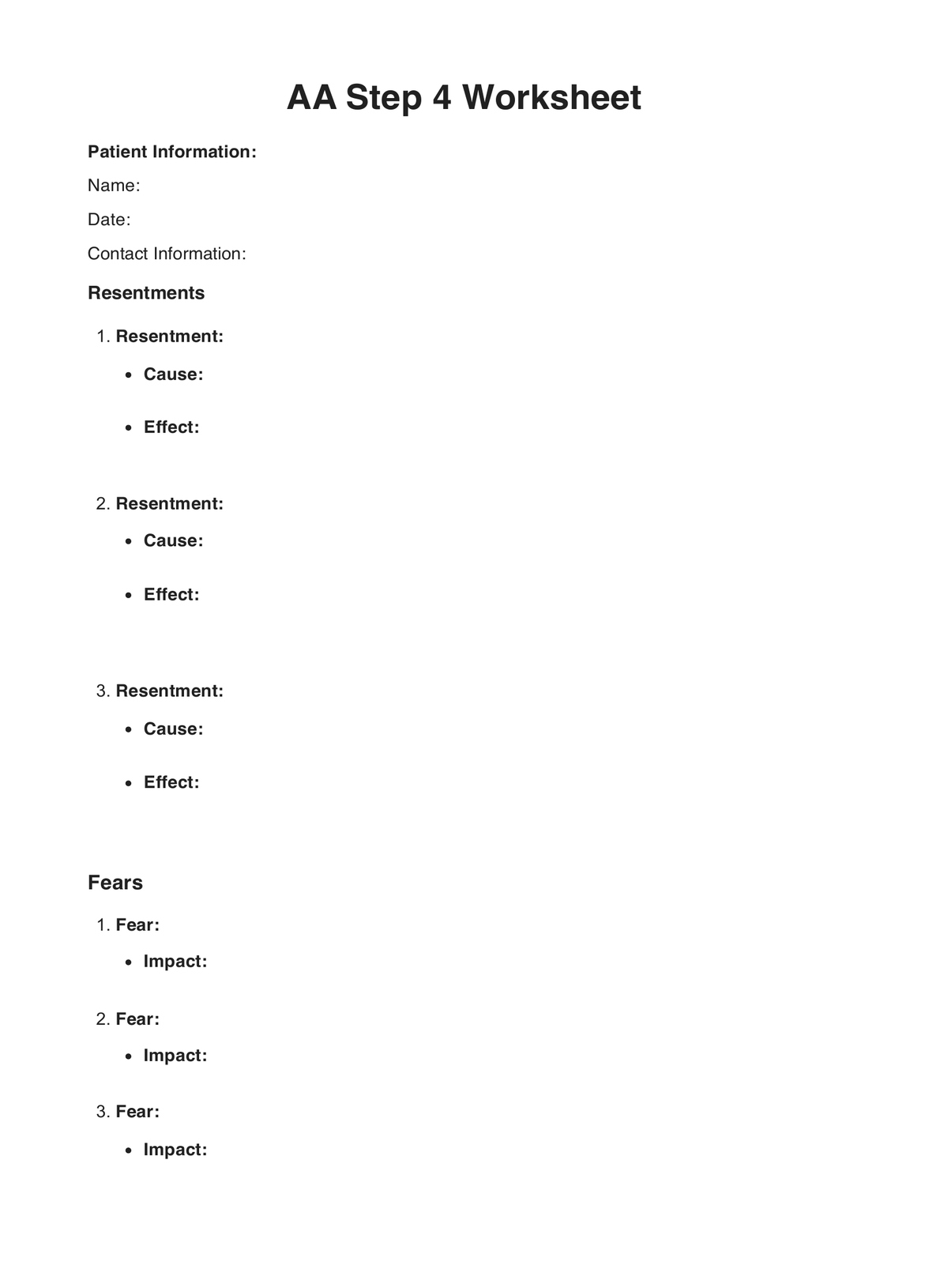
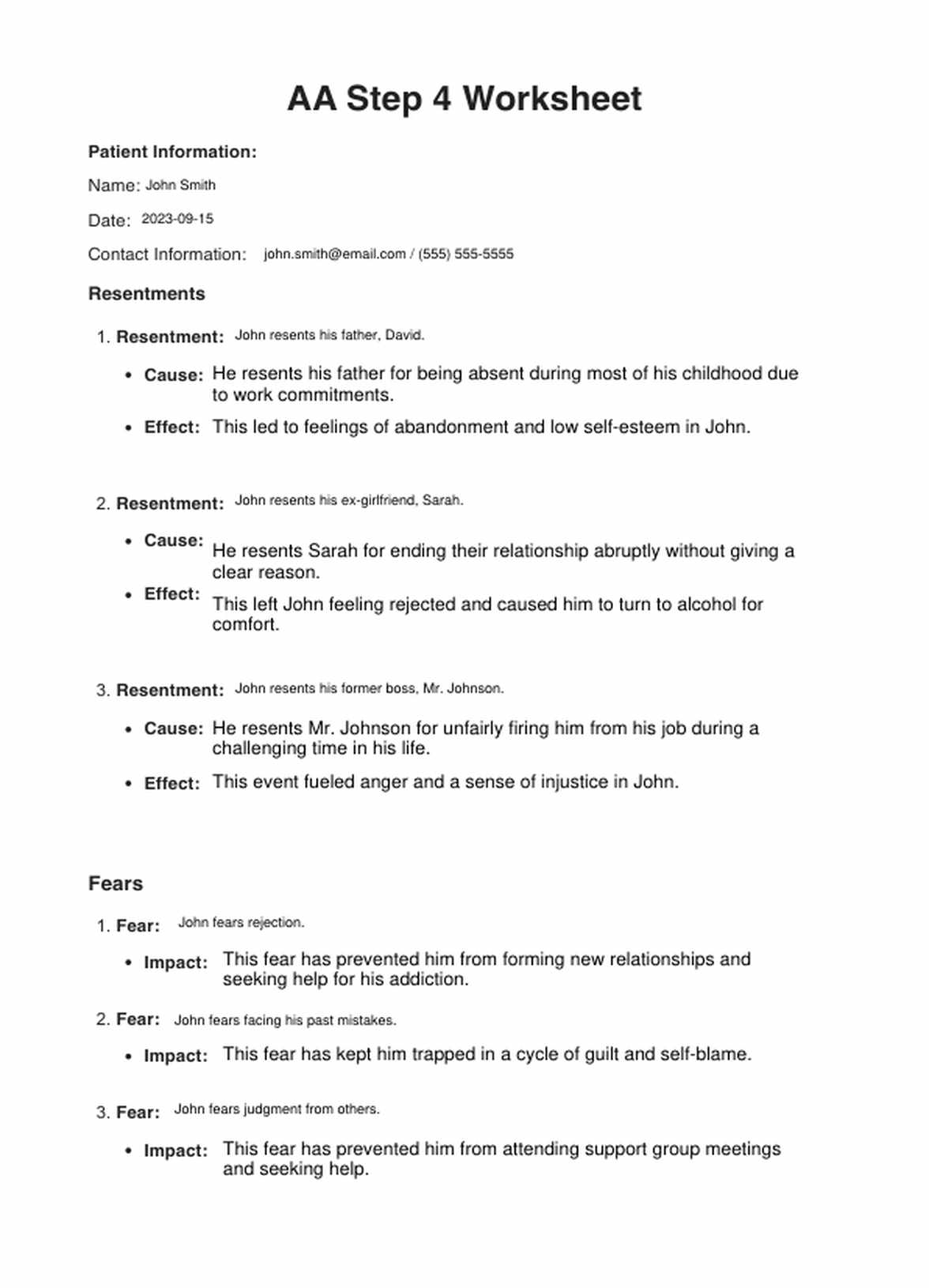

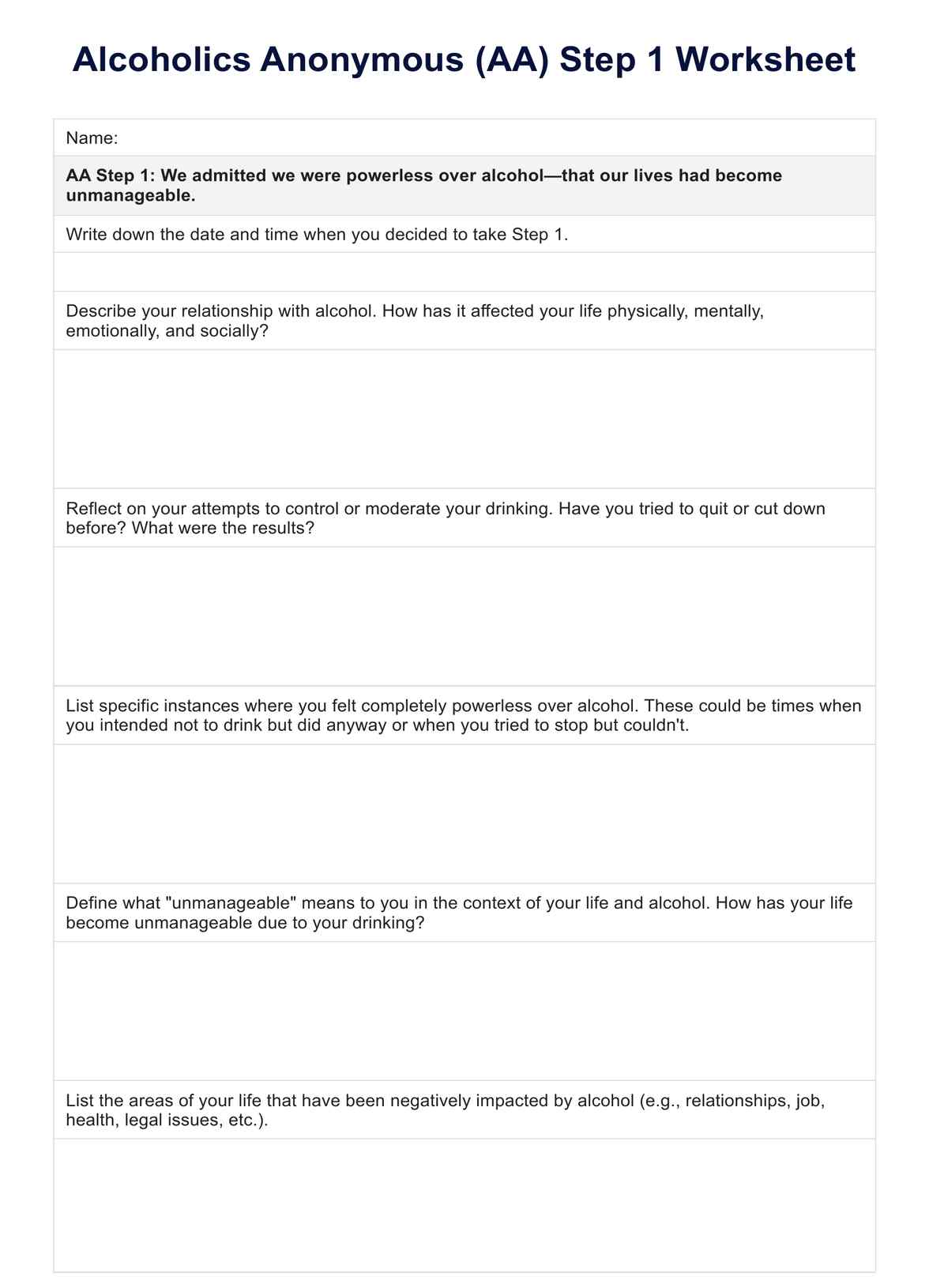
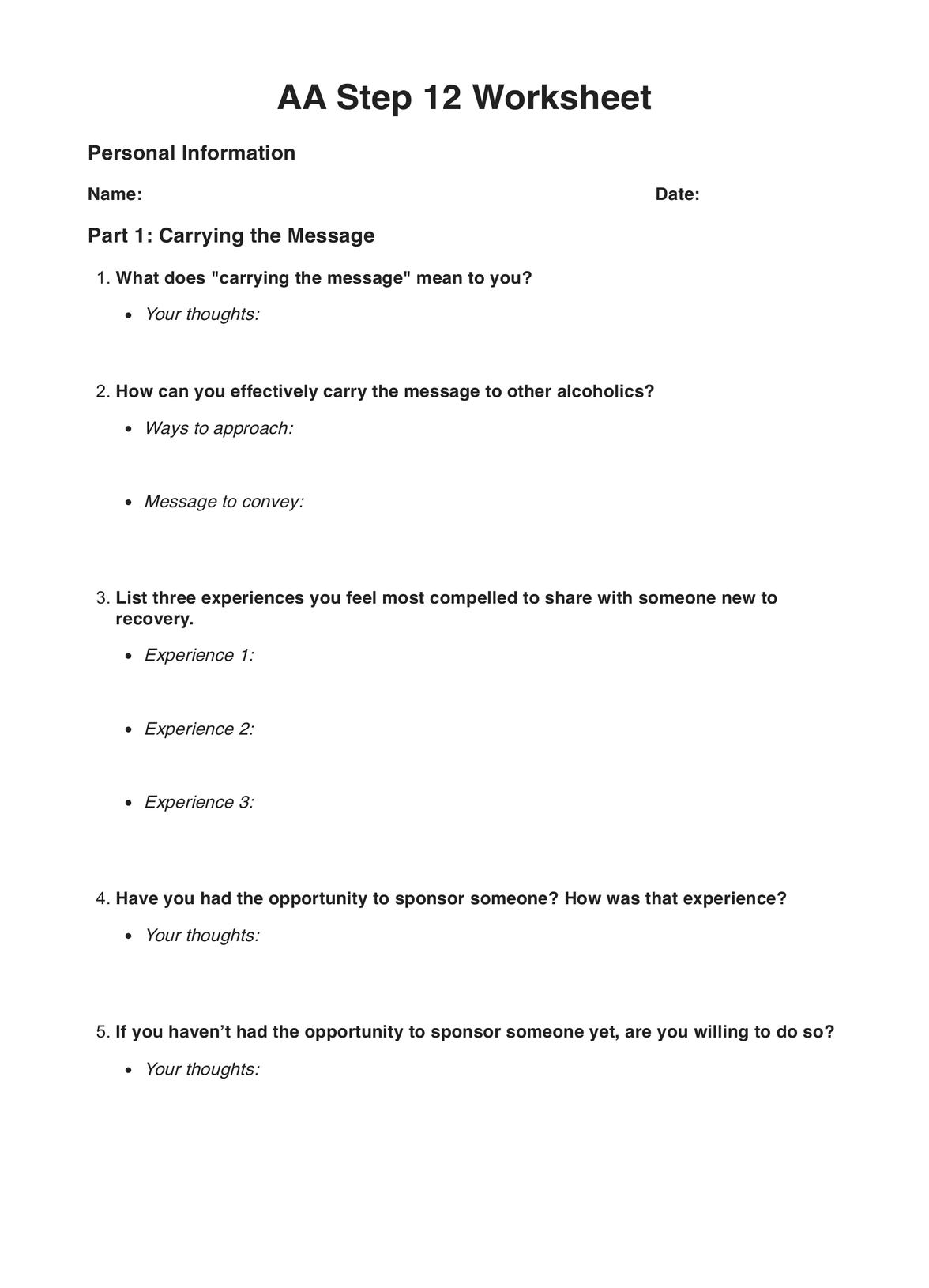
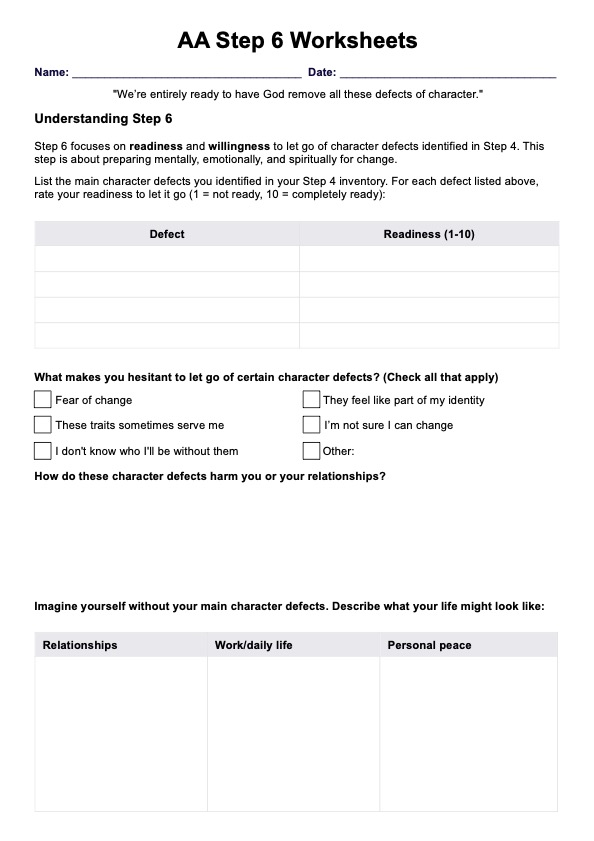
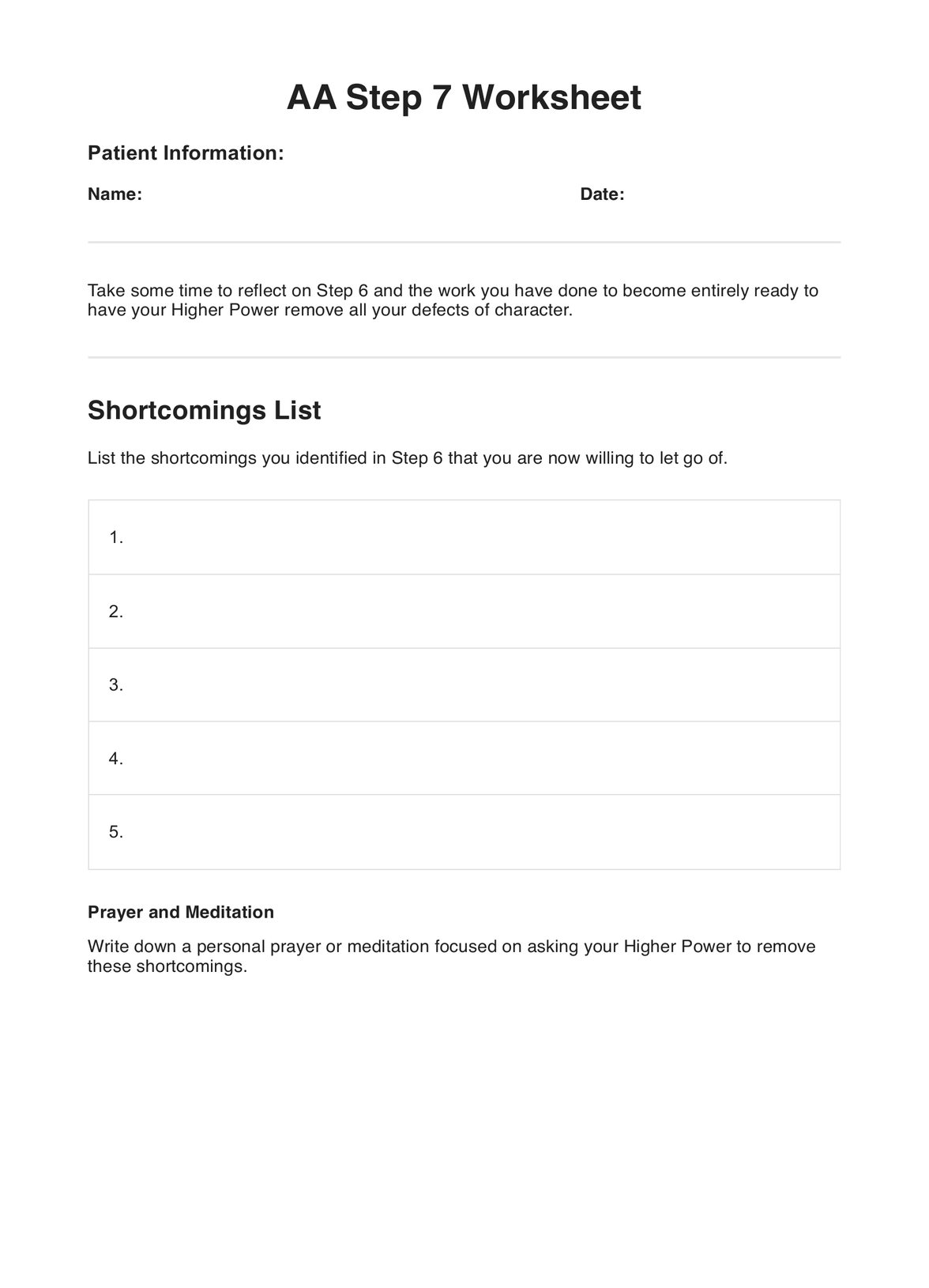
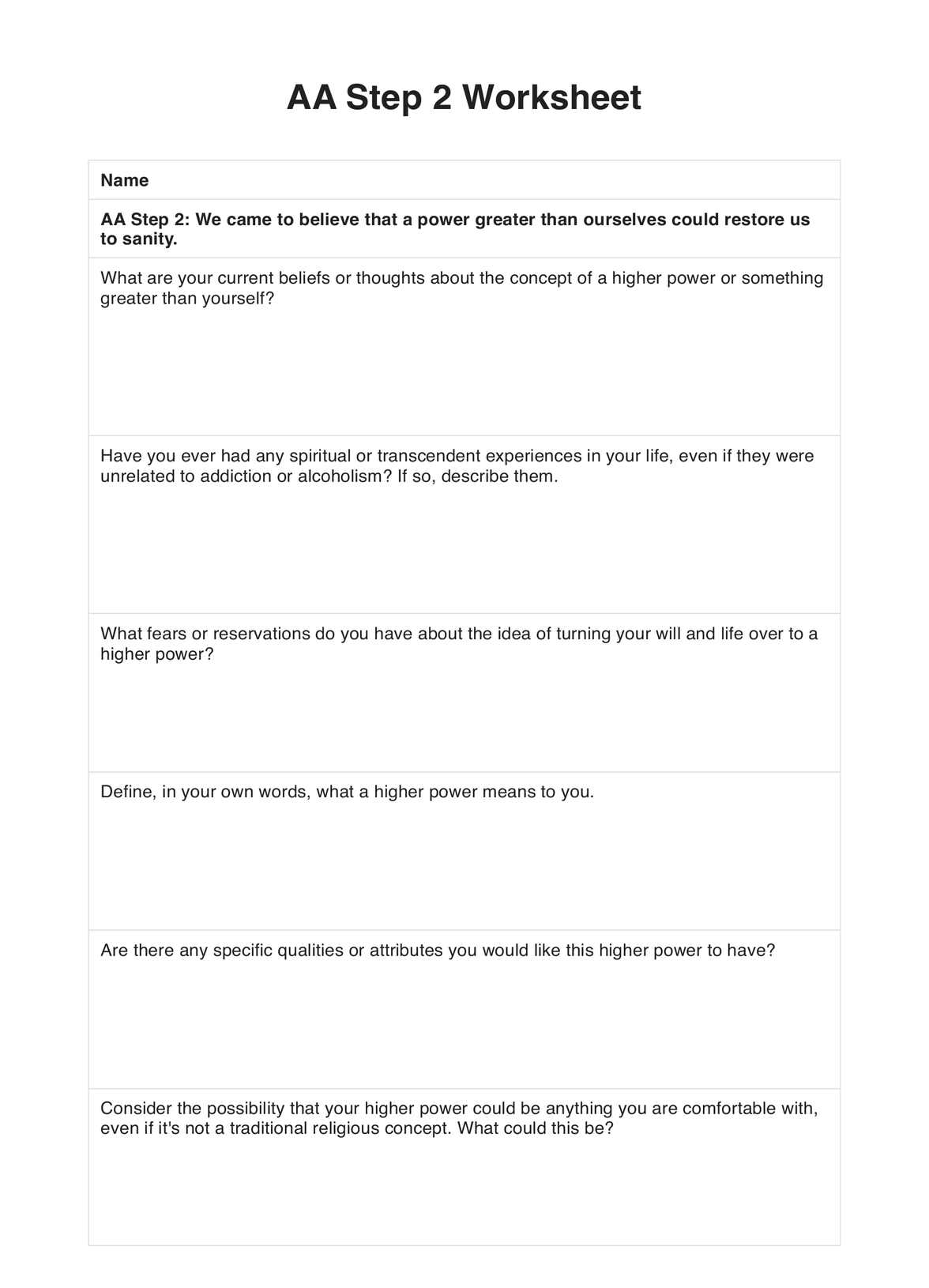
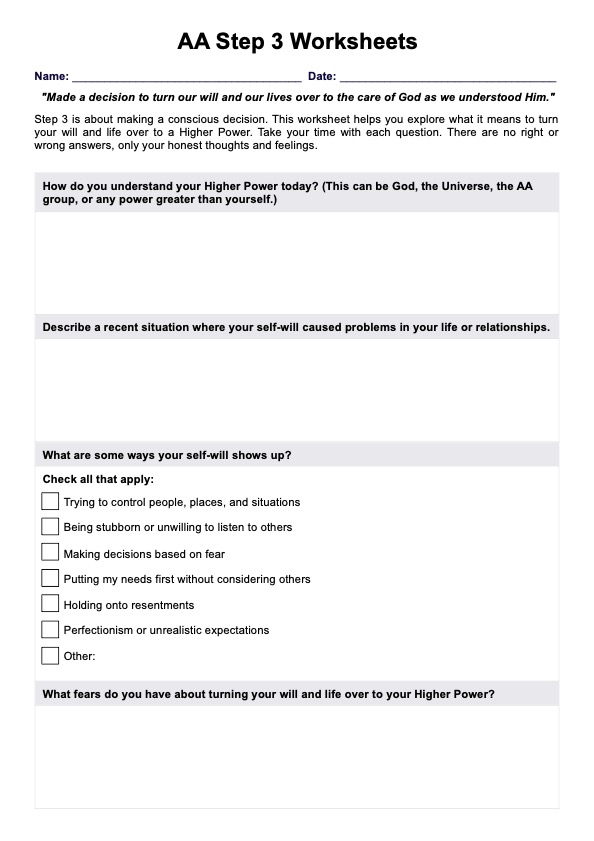
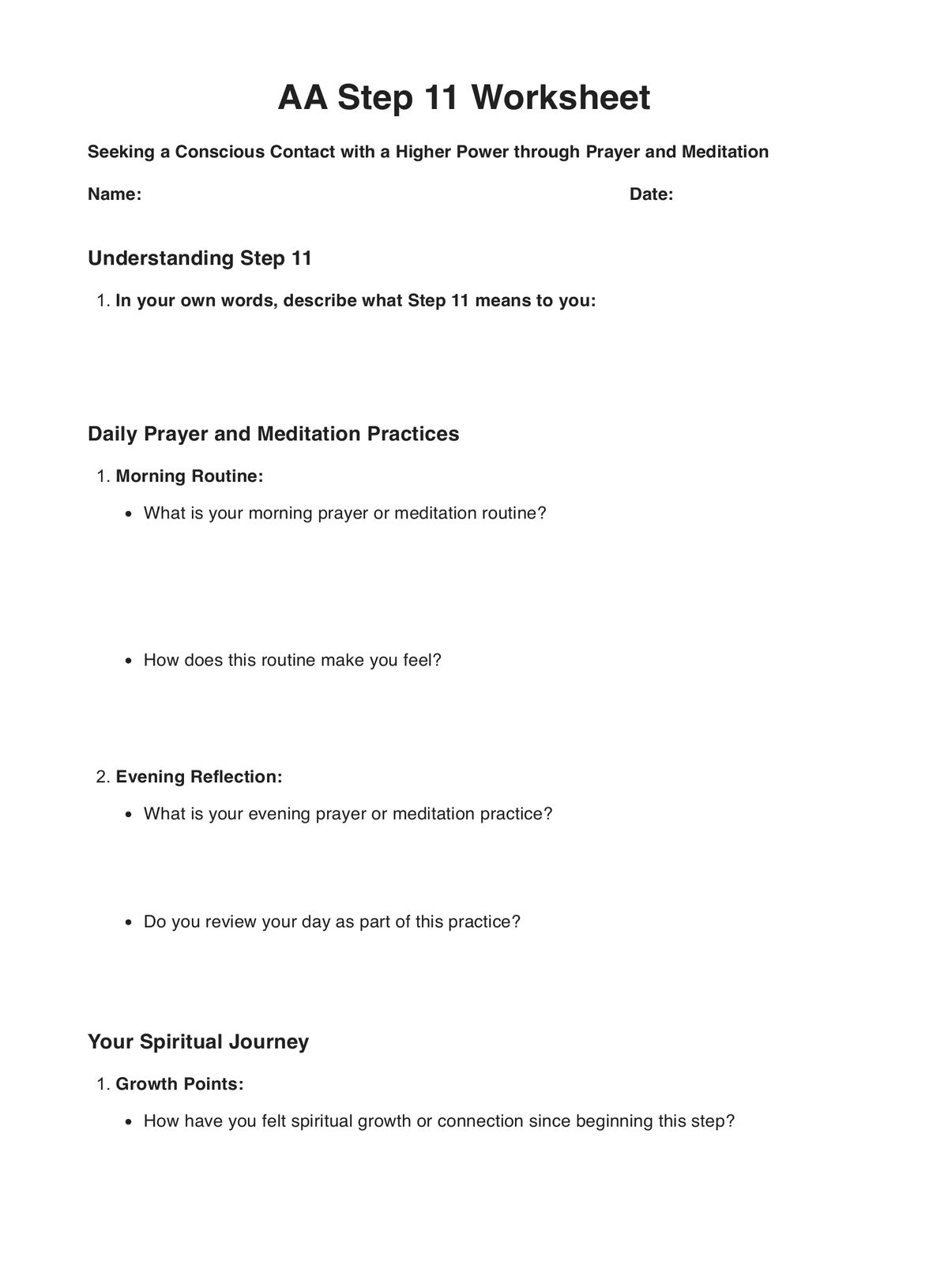
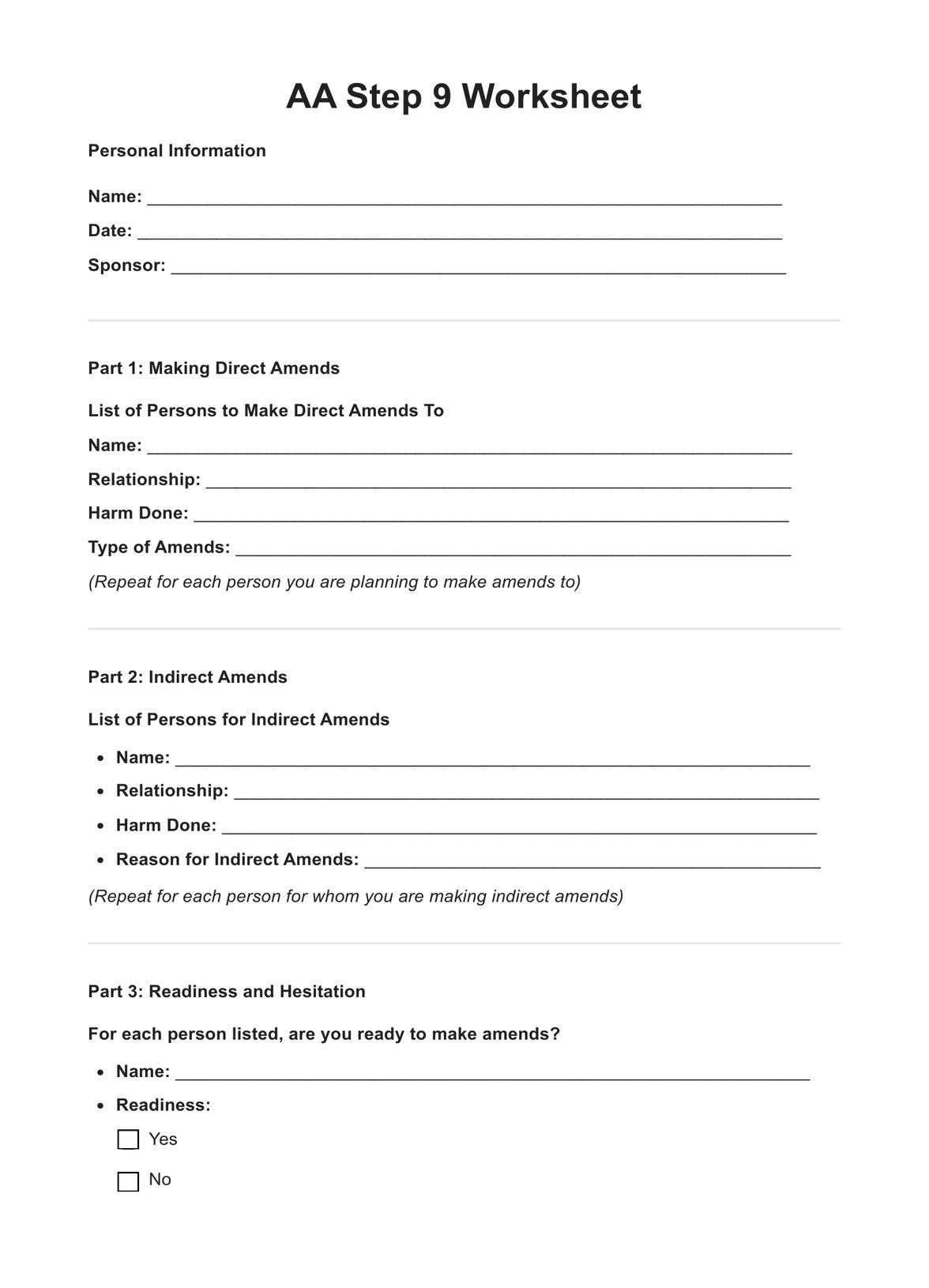

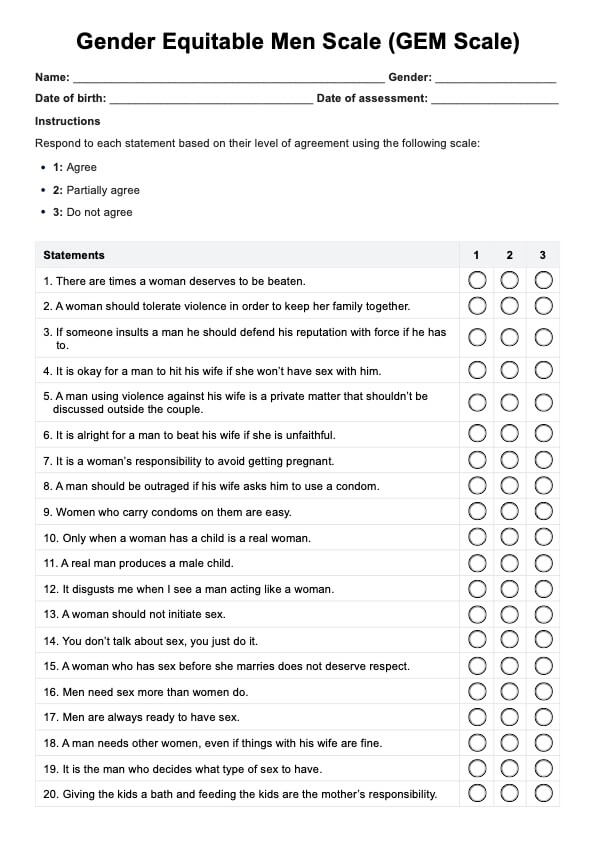











-template.jpg)


